“Putting Compassion on the Scientific Map”: Compassion Boosts Happiness/Health; and Research Indicates That Practicing Buddhists Are Happier than Average.
“There is something about conscientious Buddhist practice that results in the kind of happiness we all seek.” Dr. Paul Ekman, University of California San Francisco Medical Centre.
Intriguing research indicates that generating the compassionate mind—particularly all-embracing compassion for all beings—can have tangible health benefits. The research used a protocol dubbed a “Brain Stress Test” to test Buddhist monks against a non-meditator control group.
“The University of Wisconsin-Madison study team scanned the brains of people who had been practicing Buddhists for several years, looking particularly at areas important for emotion, mood and temperament,” writes Mark Henderson, Science Correspondent, Times Online.[6] “They found that the left side the “happiness centre” was consistently highly active in Buddhists.”
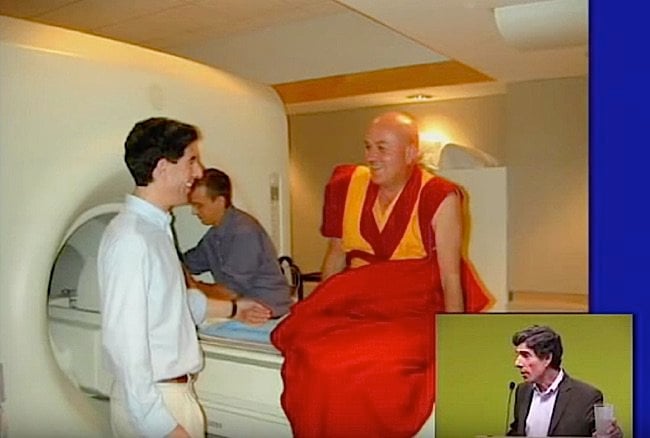
The study, designed by Professor Richard Davidson, University of Wisconsin-Madison, uses functional magnetic resonance imaging (fMRI) to map changes to the brains of Buddhist monks versus non-meditators. The fMRI allows researchers to live-map responses to negative stimuli, such as screams and cries (and the loud jackhammer sound of the MRI machine itself), then compare results between experienced compassion meditators—the Buddhist monks—and the control group of those who are inexperienced. They found the Buddhist meditators were happier, as demonstrated in brain scans, and less disturbed by stressful stimuli. The key takeaway is difficult for the layman; the study determined experienced Buddhist meditators demonstrated positive “epigenetic alterations of the genome.” (For a vide of Professor Davidson, “Transform Your Mind, Change Your Brain” by GoogleTechTalks, see video below.)
Buddhist Healthier?
How is it possible—beyond the obvious benefits of stress reduction—for experienced Buddhist practitioners to have apparently improved health? One area of the brain, the insula, contains a “map of the visceral organs of the body,” said Professor Davidson in “Transform Your Mind, Change Your Brain”, a GoogleTechTalk.
In tests of “experienced” Buddhist monks, this area of the brain was highly activated, versus the inexperienced control group, who show little activity.
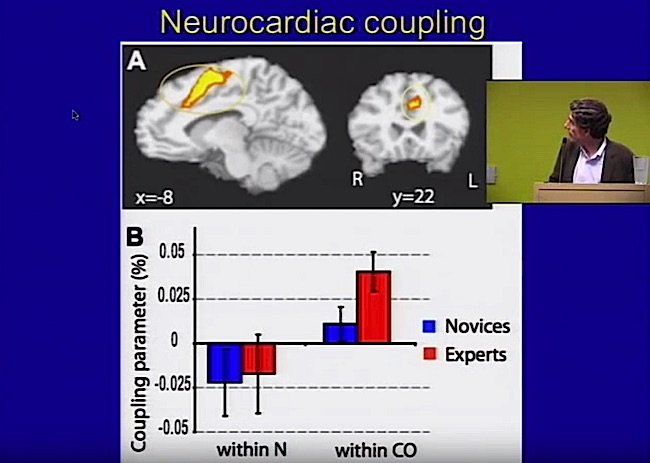
Since, according to Tibetan Medical tradition, the mind can make positive changes to the body, this may explain the connection that facilitates this healing. In Tibetan and Indian tradition, many of the great meditators of various Buddhist traditions were known to have extraordinarily long lives.
During tests, the experienced meditators showed “strongly modulated responses” to negative stimuli, “whereas in the inexperienced meditators there was no difference.” (see inset photo “Changes in the Brain Insula”) Professor Davidson said, “it suggests the Insula is an important piece of the story in terms of how the brain is changed in response to compassion training.”
Professor Davidson adds, “It’s not just the Insula that’s changed. There are other parts of the brain that are dramatically altered by compassion meditation, and two of the areas that play a role are the Enigula, which plays a critical role in emotions, and an area called the TPJ in the right hemisphere. It stands for the Temporoparietal junction. The TPJ has been strongly implicated in perspective taking, and particularly the adoption of another person’s perspective. It has been strongly implicated in empathy.” The tests indicate that activity in all three of these regions is strongly elevated in the experienced long-term compassion meditators — but not with novices.
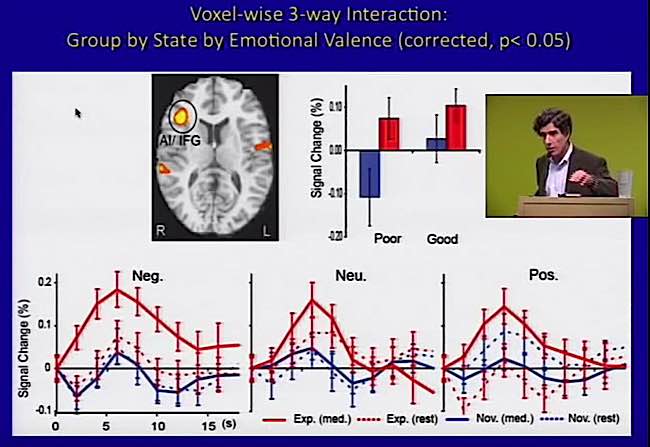
Buddhists Happier?
“Mind precedes all things; mind is their chief, mind is their maker. If one speaks or does a deed with a mind that is pure within, happiness then follows along like a never departing shadow.”
Shakyamuni Buddha, Dhammapada Verse 1
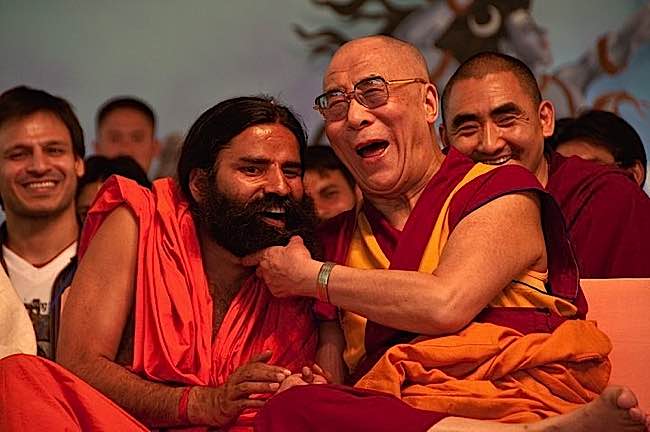
“Buddhists who claim their religion holds the secret of happiness may have been proved right by science: brain scans of the devout have found exceptional activity in the lobes that promote serenity and joy,” writes Mark Henderson, Science Correspondent for the Times Online, referring to the landmark study by Professor Davidson. “American research has shown that the brain’s ‘happiness centre’ is constantly alive with electrical signals inexperienced Buddhists, offering an explanation for their calm and contented demeanour.” [6]
In an article in New Scientist, Professor Owen Flanagan of Duke University, North Carolina writes: “We can now hypothesize with some confidence that those apparently happy, calm Buddhist souls one regularly comes across in places such as Dharamsala (the Dalai Lama’s home) really are happy.” [7] Previous studies had found that practising Buddhists showed lower activity in the fear/anxiety centres of the brain.
Universal Compassion Key to Happiness?
One particular branch of the study focuses on participants who “will learn compassion meditation — which teaches them to wish for an end to the suffering of loved ones, strangers, themselves, and eventually, difficult people.”[1] This is a close mirror of the Buddhist Metta ideal of embracing compassion to all sentient beings.
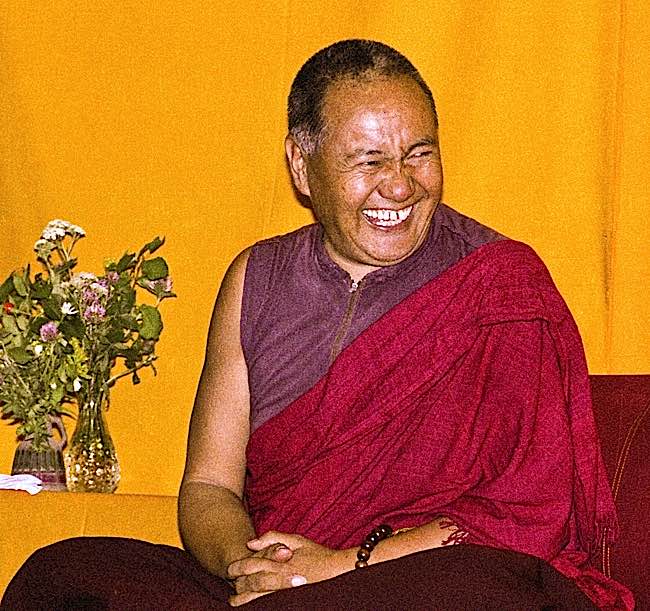
Professor Davidson, during a speaking engagement on GoogleTechTalks, explained where the inspiration for the study came from. During dialogues with the Dalai Lama at the Mind and Life Institute, “one of the ideas that emerged from these dialogues many years ago, was the prospect of putting Compassion on the Scientific Map.” [5]
Mapping Compassion with fMRI
“This is a ‘brain stress test’ if you will,” Professor Davidson explains.[5] The mapping is largely done with “real-time” MRI. The model used a “block design” where meditation and “neutral state” were alternated, overlaid with mapped events such as “negative auditory stimuli” (such as cries or screams). The fMRI depicts with imaging, “how practitioners respond to stimuli that depict human suffering when they’re either in the neutral state or the state of generating compassion voluntarily.”
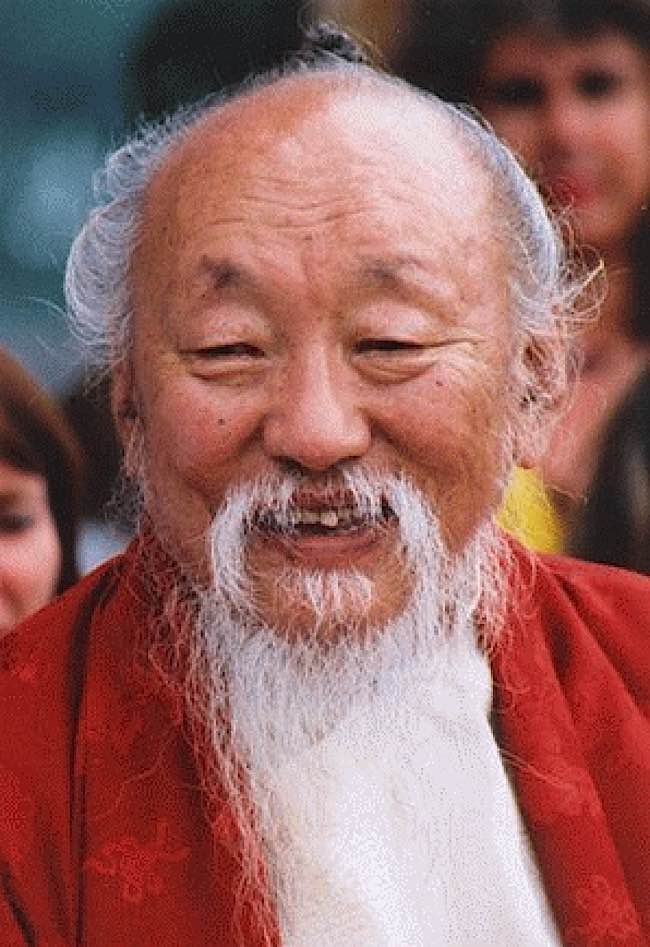
The use of Buddhist monks for the compassion subjects was simply because “pure compassion takes a lot of practice.” Generating compassion voluntarily, as required in the study, is best explained by one high profile monk participant in the research, Matthieu Ricard: “Here, what we have tried to do, for the sake of the experiment, is to generate a state in which love and compassion permeate the whole mind with no other consideration, reasoning or discursive thoughts. This is sometimes called ‘pure compassion’ or ‘non-referential compassion’ (in the sense that it does not focus on particular objects to arouse love or compassion), or ‘all pervading compassion.'” (Matthieu is not only a monk, but holds a PhD in molecular biology.)
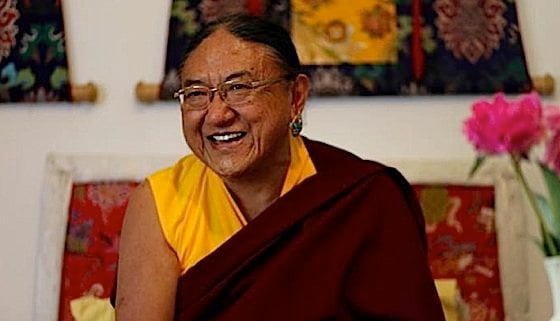
Researchers have long understood meditation has general health benefits, but the new study focuses on compassion. Alison Rowe writes, “In a previous NCCAM-supported study, researchers found that the time it takes for the threat center of the brain to respond and recover from a negative image is an indicator of neuroticism. The study showed that long-term meditators had a better recovery than novice meditators or non-meditators. In the new work, differences between mindfulness and compassion meditation will be examined and the relations between changes in the brain and changes in the body [is also] studied.” [3]
Beneficial Health Effects Indicated by Gene Expression Changes
“With evidence growing that meditation can have beneficial health effects, scientists have sought to understand how these practices physically affect the body,” reports Jill Sakai in the University of Wisconsin-Madison News. [2] The study, published in the journal Psychoneuroendocrinology, revealed “gene expression changes with meditation.”
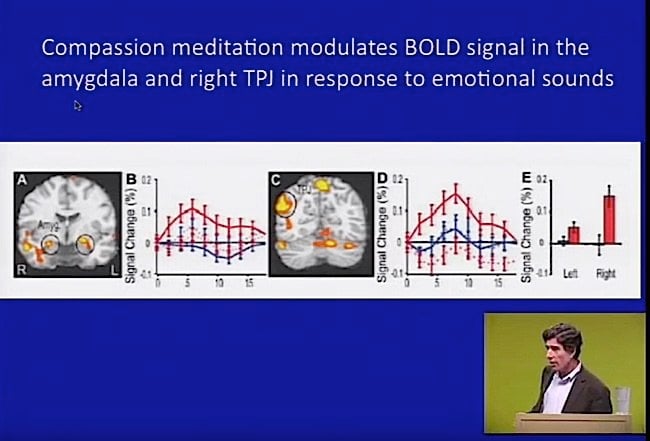
The study compared experienced meditators to an untrained control group who were engaged in quiet, but non-meditative activities. “After eight hours of mindfulness practice, the meditators showed a range of genetic and molecular differences, including altered levels of gene-regulating machinery and reduced levels of pro-inflammatory genes, which in turn correlated with faster physical recovery from a stressful situation.” This position, that meditation has “beneficial effects on inflammatory disorders” is endorsed by the American Heart Association as a “preventative intervention.”
Alterations of the Genome
This is “to the best of our knowledge” the first study to demonstrate alterations in gene expression from meditation practice, according to the study author Richard J. Davidson, found of the Centre for Investigating Healthy Minds.
Perla Kaliman, a researcher at the Institute of Biomedical Research in Barcelona, Spain, observed: “Most interestingly, the changes were observed in genes that are the current targets of anti-inflammatory and analgesic drugs.”

The key take-away from this study was: “the key result is that meditators experienced genetic changes following mindfulness practice that were not seen in the non-meditating group after other quiet activities — an outcome providing proof of principle that mindfulness practice can lead to epigenetic alterations of the genome.”
Other Studies Indicate Buddhists Happier and Healthier?
A previous study dating back to 2003, revealed that “Buddhists really are happier and calmer than other people,” according to BBC News. [8] Researchers at University of California San Francisco Medical Centre found that in Buddhists “areas of their brain associated with good mood and positive feelings are more active.” They also found that Buddhist practice can “tame the amygdala, an area of the brain which is the hub of fear memory.”
Previously, Buddha Weekly reported on a study by the National University of Singapore, which concluded, Vajrayana meditation, in particular, can improve cognitive performance and is promising therapy for degenerative brain disorders. (Story here>> ) Various other studies also show a direct relationship between mindfulness meditation and stress relief, with obvious benefits to health. Now, it appears, studies possibly support the health/happiness benefits of other Buddhist skillful means, such as metta kindness and compassion.
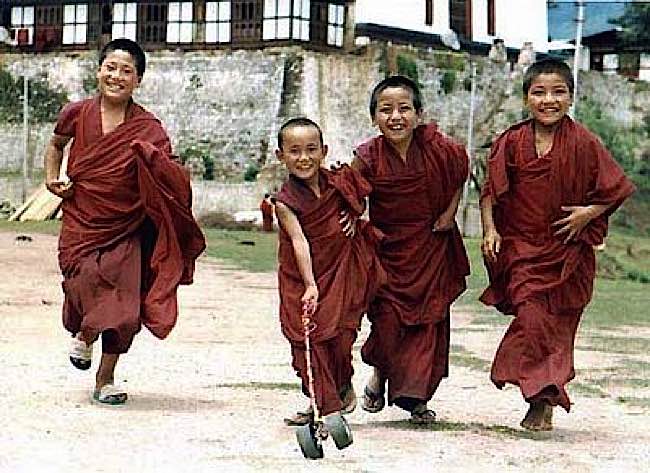
Anecdotally, the Buddhist correlation to happiness is supported by the famous “happiness index” of Burma, which inspired a modern political happiness movement around the world. The U.N. implemented Resolution 65/309 unanimously, placing “happiness” on the global agenda. According to the New York Times, In Burma, a largely Buddhist nation “With a population under 800,000, the average income is about $110 per month. Most Bhutanese do not earn enough money to pay taxes, which are only levied on annual incomes in excess of 100,000 ngultrum, or about $2,000. Despite these limitations, Business Week has ranked Bhutan the “happiest” nation in Asia and the eighth happiest in the world.” Critics, of course, point to the flip-side of Buddhist nationalism, the suppression of minorities, but overall the notion that Buddhism, even in a poverty situation, can bring happiness. [4]
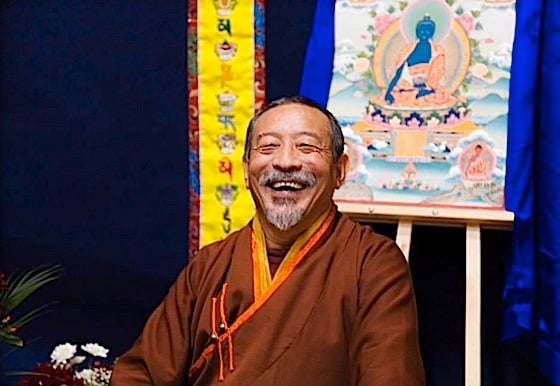
Why Buddhists Might be Healthier and Happier?
“How does practicing meditation influence an individual’s emotions?” is one of the questions the Center for Investigating Healthy Minds hopes to discover. “Can a person reduce the number of asthma attacks by using meditation techniques? How is the content of our dreams affected by meditation, and how does this affect our health and well-being?”[3]
Is it the meditation that relaxes the body? Is it the visualizations that energize the mind? Is it a positive outlook created by an overall mission to be generous, compassionate and unattached? Whatever the root cause, some studies seem to indicate Buddhists are generally happier than non-Buddhists.
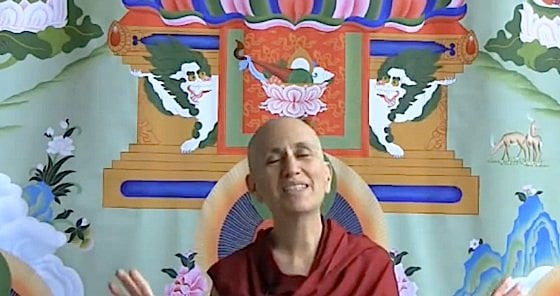
Four Essential Points
“One of the most geographically isolated cultures in the world may contain the secrets to happiness that the rest of us have been looking for,” writes Carolyn Gregoire in an article “What Tibetan Buddhism Can Teach Us About Happiness.” She suggests, “Perhaps in part because of the country’s remote location, the Tibetans have become the guardians of a deep, well-preserved wisdom tradition that modern science is only now catching up to.” [9]
Joe Loizzo, a Harvard-trained psychiatrist and founder of the Nalanda Institute for Contemplative Science, is more assertive: “Tibet has probably the greatest treasure trove of ancient contemplative knowledge, science and wisdom about how to influence the mind from the inside out. The Tibetans have an unbroken lineage of oral knowledge and technical expertise … both in medicine and in psychology.”
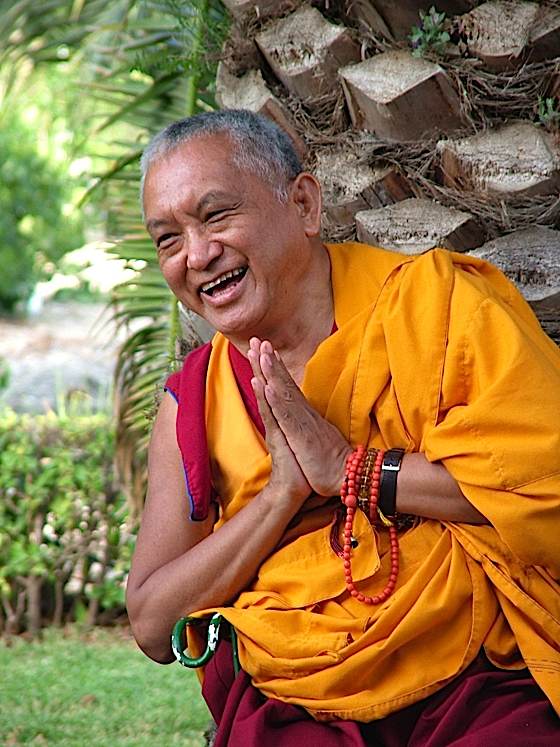
In the article, four essential lessons from Buddhism are identified as methods to help anyone pursue happiness:
- Be intimate with your mind, particularly focusing on mindful awareness and compassion
- Practice compassion, at every moment: “These practices allow us to turn our sense of life as a battle, a struggle for survival against everybody else, into a communal experience of connecting with the larger world.”
- Embrace death — don’t fear it: “A central aspect of Tibetan Buddhist philosophy is the belief that death should be embraced, and the concept that dying can be the crowning achievement of a life well lived.”
- Be with others who support and share your journey.
Mindfulness compassion meditation, especially, has been shown by numerous medical and research studies to:
- lower stress
- reduce anxiety and relieve depression
- boost positive emotions
- reduce loneliness.
NOTES
[1] “How Does the Compassionate Brain, Measured in the Lab, Predict What Occurs in Real Life.” University of Wisconsin-Madison News, 2/1/12 media release. https://news.wisc.edu/releases/17127
[2] “Study reveals gene expression changes with meditation.” University of Wisconsin-Madison News https://news.wisc.edu/22370
[3] “Grant Supports Investigations into Mechanisms of Meditation, Impacts on Health and Well-Being” https://www.investigatinghealthyminds.org/cihmPressRelease0925.html
[4] “The U.N. Happiness Project“, Timothy W. Ryback, March 28, 2012, The New York Times.
[5] “Transform Your Mind, Change Your Brain” a GoogleTechTalk by Professor Richard J. Davidson
[6] “Buddhists really do know the secret of happiness” by Mark Henderson, Science Correspondent, Times Online
[7] Professor Owen Flanagan of Duke University, North Carolina for New Scientist
[8] “Buddhists really are happier” BBC News May 21, 2003
[9] “What Tibetan Buddhism Can Teach Us About Happiness” Carolyn Gregoire, Huff Post The Third Metric
More articles by this author

Chintachakra White Wish-Granting Wheel Tara: The All-in-One Mother of Buddhas in Vajrayana Buddhism – Her Significance, Mantra and Why Her Practice is Essential

The First Doctor: Medicine Buddha Bhaisajyaguru Lapis Lazuli Light — Empowering You to Heal; the Buddha of Healing and Medicine and Doctors

Upaya: Is Skillful Means, Imagination and Creativity the Path to Realizations? Experiential Buddhist Practice or Yogas Enhance Intellectual Study.

Where is Buddha? Where are Purelands? Where is the most Sacred Place? “Your mind” is where you’ll find Buddha, Dharma and Sangha
Search
Latest Features
Please support the "Spread the Dharma" mission as one of our heroic Dharma Supporting Members, or with a one-time donation.
Please Help Support the “Spread the Dharma” Mission!

Be a part of the noble mission as a supporting member or a patron, or a volunteer contributor of content.
The power of Dharma to help sentient beings, in part, lies in ensuring access to Buddha’s precious Dharma — the mission of Buddha Weekly. We can’t do it without you!
A non-profit association since 2007, Buddha Weekly published many feature articles, videos, and, podcasts. Please consider supporting the mission to preserve and “Spread the Dharma." Your support as either a patron or a supporting member helps defray the high costs of producing quality Dharma content. Thank you! Learn more here, or become one of our super karma heroes on Patreon.
Lee Kane
Author | Buddha Weekly
Lee Kane is the editor of Buddha Weekly, since 2007. His main focuses as a writer are mindfulness techniques, meditation, Dharma and Sutra commentaries, Buddhist practices, international perspectives and traditions, Vajrayana, Mahayana, Zen. He also covers various events.
Lee also contributes as a writer to various other online magazines and blogs.














